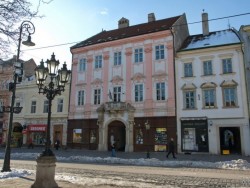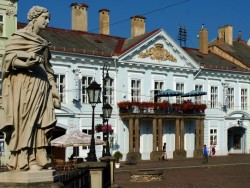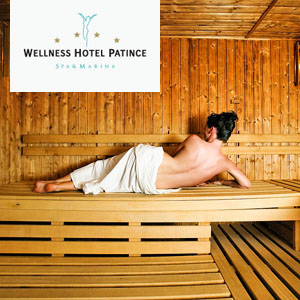National cultural monuments in Slovakia
Accommodation in SlovakiaList of tourist attractions in Slovakia

Bojnice Castle
Bojnice Castle belongs to the most beautiful and the most visited castles in Central Europe. It is sought after by many visitors from all around the world. The castle is towering at the foot of Strazov Uplands on a travertine hill above the town Bojnice. It is one of the oldest and the most important castles in Slovakia. The first written note of its existence comes back to 1113, it was found in a document of Zobor abbey. Bojnice Castle is a national culture heritage and a residence of museum. There are culture and social events held in the area of the castle, e.g. concerts of classical music...
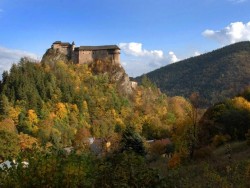
ORAVA CASTLE
Large and well-preserved castle is towering on a steep limestone hill right by the village at 112 metres over the level of the river Orava, about 10 kilometres from Dolny Kubin. The castle is a national culture heritage. Orava Castle, before the centre of Orava area, was founded in the 13th century on the place of older settlement. The oldest historical notes of it come back to the year before 1235 when it had been the king's property. Orava Castle together with the surrounded Orava lands were alternately property of royals and rich squires. The Thurzos turned the castle into a today's...
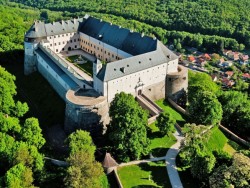
Cerveny Kamen Castle
This massive castle in good conditions is situated on quartzite hill in the village of Casta, about 30 kilometres from Bratislava on the way to Pezinok. Original king's castle from the 13th century was a part of border forts of western frontier with Hungary. In the 16th century it became the property of Thurzo family and from 1535 it belonged to the Fuggers - one of the richest European magnates and financiers. The castle went through several amendments and rebuilts. There are high vaulted cellars built. They are 72 metres long and 9 metres high - the largest in Central Europe. Till 1845 the...
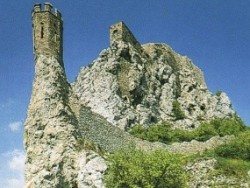
DEVÍN CASTLE
The castle hill has been settled already in the 5th century B.C., the oldest part of the today´s castle dates back to the 13th century. In 1809 the castle was destroyed, since the 60s of the 20th century the reconstruction of the castle and archaeological research began. At present, there are expositions here and exhibitions of the City Museum of Bratislava. Tel.: +421/2/54 43 47 42 Open: April-October, Tuesday-Sunday, 10:00a.m. – 5:00 p.m.. Devín (German: Theben, Hungarian: Dévény), originally a separate town at the confluence of the Danube and Morava rivers, is now a borough of Bratislava,...
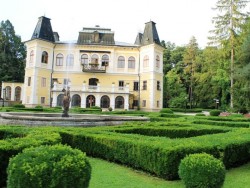
BETLIAR Chateau
This chateau is a dominant object of Betliar village, which is located 10 kilometres on the North of the district town of Roznava. History of the chateau is connected with two important yeoman and noble families - the Bebeks and the Andrassys. The Bebeks built the core of the chateau in the 15th century. Later, in the beginning of the 18th century it became one of many noble residences of Andrassy family and it stayed that way until 1945. The chateau was rebuilt several times during its existence. In the end of the 19th century there was a large Classicist reconstruction. It got today's...
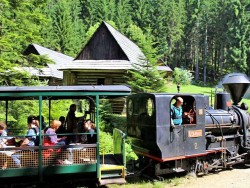
Kysuce-Orava Historical Forest Back Swath Railway
Historical logging back swath railway (HLÚŽ) is preserved and functionally restored part of the former Kysuce-Orava Logging Railway (KOLŽ), which was established in 1926 and joined the forestry railway built between 1915-1918, the Kysuce part - from Oščadnica to Chmúra (Nová Bystrica, part Vychylovka ) and Orava part - from Lokca to Erdútka (currently Oravská Lesná). Traffic on KOLŽ was ceased at the end of 1971 due to its cancellation and except the 8 km long section Chmura - Tanečník where was the whole valuable back swath system other tracks has been dismantled. In 1974, the...

Museum of Prehistory - Prepoštská jaskyňa Cave
Bojnice is considered a jewel of the primeval history, the most valuable Neanderthal prehistoric man site in Slovakia. Museum of prehistory located on the original site inhabited with Neanderthals in prehistoric times (area of the travertine Prepost cave), in an interesting form elucidates their life: which stone tools they were able to produce, what they ate, how they hunted animals, what they wore, how they your shared work in prehistoric gang in order to survive ... Archeologists consider Bojnice as the richest Paleolithic site of Slovak history. Amount of chipped stone tools were discovered...

Spis Castle
Massive ruins of Spis Castle are lying on the travertine hill of 634 metres above Spis settlement around the castle. The ruins are the largest in Slovakia as well as in Central Europe. Although the first historical notes about the castle come back to the year 1120, archaeological evidence proves a settlement on the castle hill already in the 4th century BC. It was a district centre castle in the 12th century. In the first half of the 13th century there were protective stone forts around the castle acropolis. The fortification saved the castle against Tartars attacks in 1241. In that time Romanesque...

Trenčín Castle
Trencin Castle is built on a high limestone hill; it dominates Trencin town and surrounding area. It was founded in a place of fortified settlement, which must have been fortified and equipped with castle objects because it had already been the king's guard castle in the 11th century. Romans had already appreciated the advantageous position of the locality close to Carpathian passes and Vah fords. The evidence of it can be seen in a famous sign on the castle rock from 179 A.D. This commemorative note remembers victory of Caesar Marcus Aurelius and his stepson Commod over Kvads in 179 A.D....

Academia Istropolitana
The Universitas Histropolensis (since the 16th century frequently - but incorrectly - referred to as Academia Istropolitana) in Pressburg (today's Bratislava) was the first university to be founded in the territory of present-day Slovakia. It was founded in 1465 by Pope Paul II on the request of King Matthias Corvinus. It was the only university in the Kingdom of Hungary at that time, although historically not the first in Hungarian territory. Many well-known lecturers from Austria, Italy end elsewhere taught at the school. The university ceased to exist around 1490 after the death of Matthias...
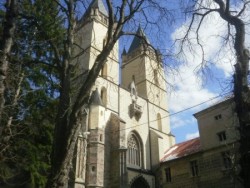
Benedictine Monastery Hronský Beňadik
Benedictine monastery in Hronský Beňadik consists of a set of fortified sacral buildings in the village Hronský Beňadik in the district of Žarnovica in Banská Bystrica region. The monastic complex its stunning visitors with contemporary monumentality is a unique combination of sacred buildings and fortification as well as the symbiosis of different building styles - Gothic, Renaissance and Baroque. The complex of buildings even today seems to be as a guardian of the crossroads. Benedictine Abbey in Hronský Beňadik was solemnly consecrated in 1075 in the presence of the founder of the...

Bytča Manor house
Renaissance mansion in the city centre of Bytča is one of the most important and architecturally most impressive feudal settlements in Slovakia. The National Cultural Monument consists of a Renaissance palace so-called Wedding Palace as well as economic and residential buildings. Originally there was a small castle built in the 13th century, belonging to the Bishopric of Nitra. In 1563 Francis Turzo took possession of the Bytča estate together with the castle. He built on the site of an old Gothic castle new castle - fortified complex multi-functional structures in the years 1571- 74. In the...
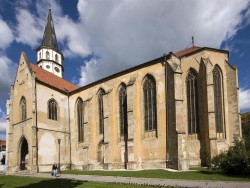
Church of St. James
Church of St. James in Levoča, originally in gothic style, is the second largest church in Slovakia, national monument and a building of a particular art-historical significance. Originally the church from around the year 1280 stands on its place. The current church was built from the first third of the 14th century. The church was modified at the end of the 15th and early 16th century, partly in the 17th century. In the temple you will find the ornamental late-Gothic painting, several frescoes groups: on the northern wall of the left side of the ship in two rows of seven works of mercy...
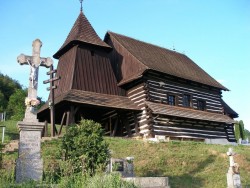
Church of St. Luke the Evangelist (Brezany)
Greek Catholic Church of St. Luke the Evangelist from 1727 in the village Brezany, district Prešov is a historic wooden sacral building in Slovakia. Restoration of the church was made in the second half of the 18th century. It is currently also a branch of the Roman Catholic parish in nearby Bajerov. From an architectural point of view it regards as an atypical three-part log-house with a strong influence of Gothic Roman Catholic religious architecture. The windows are made by deep cuts in two adjacent beams. Glazed opening is provided with a simple iron grate. Baroque iconostasis dates from...
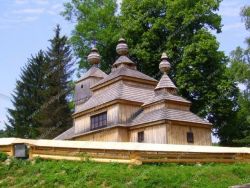
Church of St. Nicholas in Bodruzal
St. Nicholas Church is a wooden Greek Catholic Church of the Eastern rite in the village in Bodružal, in the district Svidník in the Prešov region. Since July 8, 2008 it is registered in the list of world cultural heritage by UNESCO under number 1273-007. It comes from 1658 and is one of the oldest sacral buildings of Eastern rite in Slovakia. The church has three towers. It has a log construction in a shape of three squares setup on one axis from east to west. Its exterior is lined with wooden boards. The layout of the various parts of cerkva symbolizes the Holy Trinity. Cerkva is located...
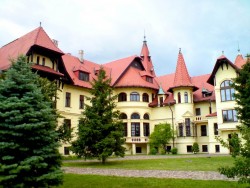
Csáky's Castle
Csáky's castle in Prievoz (older Csákys manor house) is a manor house that Count Eugen Csáky had built as his summer residence near Bratislava, probably in 1902. The building is from a period of ripening romanticism, but shows elements of eclecticism and has an irregular disposition. In 1916, Pavol Žolnajov sold out individual parts of the french garden originally belonging to the manor house. In 1933 the building together with a small part of the park were bought by the nuns of the Congregation of the Daughters of St. Francis of Assisi, they established a monastery in the mansion and...
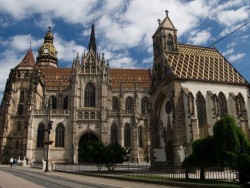
St. Elisabeth Cathedral
The St. Elisabeth Cathedral is a Gothic cathedral in Košice. It is Slovakia's biggest church. The record on the existence of Košice dating from 1230 in connected with that on the existence of the rectory church. In the process of the settlement's transformation from a rural community into a town, all its periods of success and failures had been reflected on St. Elizabeth's Cathedral. According to historic data the present-day cathedral was built on the site of an edifice of older date which was consecrated to St. Elisabeth as well. It was referred to in the document of Pope Martin...








